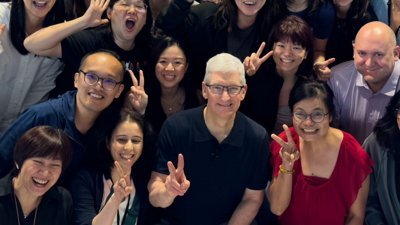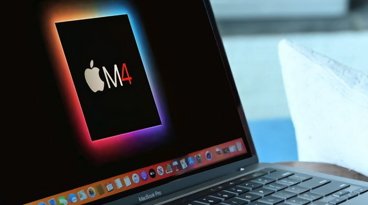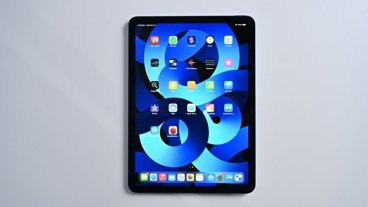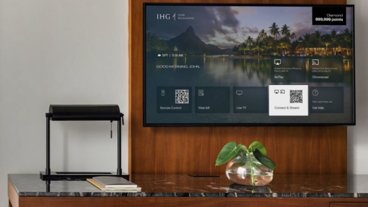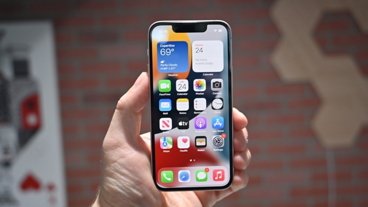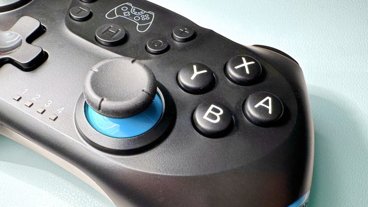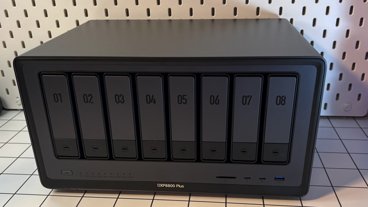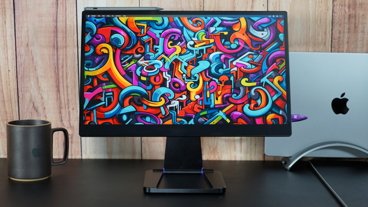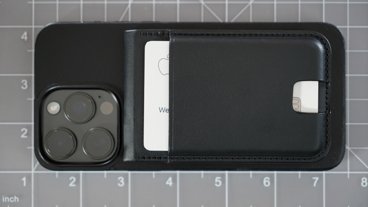In-depth review: Apple's third generation iPad and iOS 5.1
Apple iPad (3rd generation)
4.0 / 5In our initial review of the first iPad in 2010, we had to introduce it as an entirely new category of product. A new form factor, a new feature set, new user interface and a new overall way of working with technology that Apple has since come to refer to as a “Post-PC†device.
In our subsequent review of iPad 2 last year, we had to note how quickly Apple had improved upon iPad in comparison to successive generations its earlier products, including the iPod and iPhone.
The latest iPad delivers new enhancements at an even faster pace than last year's iPad 2. While it took Apple four years to bring its Retina Display to iPhone 4, iPad is getting similar treatment in just three.
The new iPad also offers 4G LTE mobile data service that no version of the iPhone yet delivers. Unlike other vendors' 4G devices, the new iPad doesn't compromise its long battery life to do so. The new iPad also delivers twice the RAM and twice the graphics processing performance of the latest Phone 4S.
This year's iPad also now provides the same high-quality FaceTime (that’s Apple’s new brand for VGA-quality video conferencing cameras) and 5 megapixel iSight (its resurrected brand now applied to cameras capable of HD video, with higher quality photo optics) cameras that debuted on the more expensive iPhone 4. Previous iPads used the same basic 720p rear camera as iPod touch.
Back to the iPad
Of course, the new iPad isn't competing against the iPhone. Apple's iOS devices are collaborating, leveraging upon incremental advancements delivered every spring by iPad and every fall by a new iPhone model. A major example of that collaboration comes with the latest iOS software. Some features debut on the iPad (as Apple's iWork apps or Photo Booth, still exclusive to iPad) and some originate on new iPhones (such as FaceTime and Siri/Dictation).
The new iOS 5, for example, erases one of the biggest drawbacks of previous versions of iPad: its mandatory tether to iTunes for content, sync, backups and initial configuration.
Among the "obvious limitations" of iPad 2 that we complained about last year, we noted, "it's modeled after the iPod as a peripheral you attach to iTunes," adding that this "means you can't use iPad as a computer replacement."
Well now you can, thanks to iOS 5's "PC free" set up and iCloud.
Apple has similarly incorporated iOS features into OS X Lion (Auto Save, Mac App Store, LaunchPad, Full Screen Apps, Photo Stream, Find My Mac) and the upcoming OS X Mountain Lion (iCloud features such as Reminders and Notes, Twitter integration, iMessages, Notification Center, Game Center and AirPlay Mirroring).
Being an iPad
The overall depth and breadth of advancements in the new iPad offer an explanation for why Apple is simply calling it “the new iPad.†While competitors may offer tablets branded third-generation or 4G or HD, they can't call their new products an iPad.
Being an iPad means the ability to run a vast portfolio of tablet-optimized apps, deep integration with iTunes for easy content management and simple connectivity with iCloud for email, messages, contacts, calendar, bookmarks, photos, Documents & Data and remote find and alarm services, all in one place.
Being an iPad also means the ability to work with "Made for iPad" Dock Connector compatible peripherals, low power Bluetooth 4.0 devices, and accessories including Apple's Smart Cover introduced with iPad 2.
Apple just enhanced what it means to be an iPad with the release of iOS 5.1 (and new apps including iPhoto and updated versions of other iLife and iWork apps) and with the incorporation of blockbuster new hardware features in the latest iPad.
On page 2 of 6: The beautiful Retina Display
Let's start with the screen. Apple could call the new Retina Display iPad "HD," but it actually has 1 million more pixels than the high end 1080p HDTVs now on sale. Its screen supports 2048 x 1536 pixels at a 264 pixel per inch density.
In the PC world, adding additional pixels via a higher resolution screen typically had the effect of making everything on the screen smaller. For the new iPad, Apple followed same strategy for iPhone 4: more pixels don't mean a smaller user interface; they mean a sharper user interface.
It's easy to look at the new iPad and immediately take its Retina Display screen for granted. You have to compare it with previous generations of iPad to remember how things used to look.
Previous iPads exhibited minor pixelation particularly noticeable on the rounded corners of buttons; a gray, muddled appearance in the anti-aliasing of text and an overall user interface that looked like a computer. With the new Retina Display, iPad looks like you're working with reality.
It's the same qualitative jump iPhone 4 experienced over iPhone 3GS, except rather than being limited to a small smartphone screen, iPad delivers a magazine-sized version of that same ultra-sharp display. It's hard to convey in words how beautiful it is. It's like interacting with a glossy, high resolution print page that smoothy interacts with your touch.
It simply looks perfect. In fact, when there is some display bug (as I observed in iOS 5.1 when selecting text; you occasionally get a missing line of pixels in the highlighted selection), it looks jarring. As if you're noticing a flaw in the Matrix.
Fortunately, such flaws rarely occurred in testing. The overall user interface feels solid and responsive. While being the first release supporting the new iPad, iOS 5.1 draws upon two years of Apple's experience with iPad and five years of development since the release of the original iPhone. It feels experienced and mature.
On page 3 of 6: More iPad iPhone 4-nication: a decent camera, new A5X chip
In addition to its Retina Display, the new iPad now gets new iPhone 4 style, iSight video and still camera camera, along with the same basic VGA quality front facing FaceTime camera for videoconferencing.
While iPad is unlikely to replace your existing camera (due to its ungainly size and format for snapping pictures) the significantly more useful rear camera now works to capture both good quality snapshots and video and to integrate with apps that work with photos, video, or augmented reality, including Apple's new iPhoto and revamped iMovie, along with a large selection of camera-savvy third party apps.
The new 5 megapixel "iSight" camera offers autofocus, tap to focus, photo face detection, video stabilization, geotagging and up to 1080p HD, 30 frames per second video recording.
While virtually identical with the rear camera of iPhone 4, the new iPad displays a picture on the screen that isn't quite as impressive as iPhone 4 because it's stretched over a larger area. The pictures and video it takes are virtually identical though.
Note that the new iPad, while delivering an iPhone 4 quality sensor and lenses, lacks an HDR capture feature and the LED flash of iPhone 4 (as detailed later in "missing features").
While the LED flash doesn't always help when taking photos or videos, it's a significant (and odd) feature omission on the new iPad. The missing software HDR feature is even more puzzling, as HDR often makes weak photos better in a variety of common circumstances, and doesn't add any extra hardware costs.
In the photos below, the new iPad and iPhone 4 take roughly the same 5 megapixel (1936x2592) picture (top iPad with better exposure, second taken with iPhone 4), but iPhone 4's HDR processing delivers a marked improvement that the iPad can't match (third iPhone 4 HDR photo), for no obvious reason other than that Apple decided to deactivate some of its iOS code on the iPad.
Apart from the lack of LED flash and HDR, the new iPad's photo capabilities are very much in line with the very good iPhone 4 camera. Taking video with the larger tablet form factor is greatly assisted by the video stabilization feature, which gives you very watchable video even when you're doing a poor job of holding camera still while recording.
Here are some additional iPad photos I snapped on the chairlift at Squaw Valley, scaled down to 800x598 to fit here:
It's a bit of a bummer that, as with its iPhones and iPod touch, the new iPad still gets a very basic front facing camera. That means if you find yourself without a mirror and want to include yourself in a group shot you're taking yourself, you have to either blindly use the rear camera, or use the poor front facing camera to take a picture you can see on the screen (which results in a very low quality picture).
iPad gets new A5X chip
The new iPad also introduces a new A series application processor, although it's not a big enough leap for Apple to call it the A6, as was anticipated. Instead, Apple is referring it to as the A5X.
Nobody complained that last year's A5 (powering iPad 2 and iPhone 4S) was a slouch. In fact, Apple had to think up new applications capable of using its latent processing power, such as video stabilization and face detection, just to keep the new chip busy.
iPad 2 wasn't really crying out for new processing power, and the A5X doesn't deliver a big jump in general purpose CPU performance, as noted in Geekbench scores (below). Most of the speed gains can probably be attributed to the new iPad's additional RAM. Note that the new iPad is internally either "iPad 3.1" for the WiFi model or "iPad 3,2" for the 4G edition, which we tested below.
Browsermark scores of web and JavaScript performance are significantly higher on the new iPad compared to the iPhone 4S however, indicating the applied CPU performance of the A5X (and its faster RAM and CPU clock speed) is advancing ahead of last year's A5.
The new iPad's Retina Display, with four times the pixels of previous iPad and iPhone models, does need additional graphics horsepower. So Apple retained the dual processor cores of A5 and added twice the graphics processor cores, providing quad core graphics to drive the new iPad's sharp new display.
The result is a chip that delivers the required horsepower without simply chowing down power to boast about the number of cores it has. Note that iPad 2 and its A5 chip delivered a graphics edge over the original iPad that allowed developers to deliver sharper graphics with less jaggies, even at the same resolution.
The new iPad not only delivers greater horsepower, but also drives four times the pixels, meaning that games can now improve their visuals with the same dramatic leap that iPhone 4's Retina Display brought to iPhone apps.
Visible in the GLBenchmark scores (below) is the impact of the higher resolution of the new iPad compared to the last three generations of iPhone. Even the fastest new iPad renders onscreen graphics benchmarks lower than the iPhone 4S, because its pushing more than 4 times the pixels.
"Off screen" however, the A5X can render a fixed 720p scene about 50 percent faster than last fall's iPhone 4S, thanks to its beefier quad core graphics. In drawing triangles in the stress test, the A5X blows out over 122 million, compared to 15 million on the original iPad, and just 16 thousand on the iPhone 3GS.
In third party testing, the dual core CPU, quad core GPU A5X in the new iPad handily beat the quad core CPU, 12-core GPU of the Nvidia Tegra 3.
In GLBenchmark's Egypt Pro 720p test run against the Android-based, Tegra 3 powered Asus Transformer Prime tablet, the new iPad delivered scores between about 3.4 faster: 12447 vs 3669, or 250 FPS vs 73 FPS. (Apple claims its chip is four times as fast at graphics as the Tegra 3).
On page 4 of 6: 4G LTE that doesn't destroy your battery life, 4G vs LTE
The final big hardware feature incorporated by the new iPad is 4G LTE mobile data service. Replacing the 3G option of iPad 2, the new iPad offers an AT&T or Verizon Wireless version with 4G LTE networking (each is tied to the carriers' specific implementations of LTE, which is tied to the frequency bands of their licensed radio spectrum).
It is unfortunate the new 4G data service doesn't "just work" on every provider, an issue related to the LTE frequency bands supported by different carriers and made available by different countries rather than being a problem Apple can solve on its own. The iPad's LTE support is also currently limited to North American carriers (including Bell, Rogers and Telus in Canada), although Apple may introduce new models or new agreements with other carriers in the future.
To 4G or not to 4G, that is the question
However in addition to 4G LTE, the new iPad also supports what Apple calls "advanced 3G networks," including HSPA, HSPA+ and DC-HSDPA. Those include mobile networks a variety of carriers (and the ITU standards body) refer to as 4G because they can achieve theoretical download speeds of 21 to 42 Mbps, compared to the 3-7 Mbps theoretical maximums associated with typical American 3G service.
So even in countries that don't support the new iPad's LTE, its mobile data network capacity can still deliver speeds comparable with Wi-Fi and real world LTE speeds (and much faster than the 3G service available on previous iPad models), as many carriers globally have done what AT&T has done in the US: bolster their existing GSM/UMTS mobile networks with HSPA/HSPA+ upgrades. In fact, much of the rest of the world is further along in this effort than the US is.
Even in the US, LTE is only offered in limited, mostly urban areas. Verizon currently has a larger deployed LTE network (albeit still limited to major metropolitan areas), but in large part that was because Verizon's 3G network was the weakest, so it needed to build out LTE a little more desperately than AT&T (and the rest of the GSM/UMTS world) did.
Verizon has trumpeted 4G LTE out of necessity, and helped create the impression among tech pundits that LTE was the only "real" 4G, and that everything else, regardless of its actual speed, was phony marketing lies. The reality is that Verizon is really no less of a phony marketer than any other mobile carrier.
Apple is carefully taking the high road in avoiding overtly marketing HSPA+ and related technologies as "4G," although it has started indicating 4G service on the iPhone 4S when HSPA+ is in use. It still differentiates 4G and LTE service, to avoid upsetting people who have bought into Verizon's marketing lines.
US 4G and LTE coverage maps
In our testing of iPhone 4S on different networks, we found Verizon's 3G network was consistently about half the speed of AT&T's, in part because AT&T's UMTS 3G is simply faster than Verizon's older CDMA EvDo 3G. Additionally, AT&T's HSPA/HSPA+ networks are faster still, providing a middle ground between slow 3G and the fastest 4G.
If you break out AT&T's faster, more modern HSPA+ networks, which can deliver the same WiFi-like mobile speeds as LTE, the comparison between AT&T and Verizon's available "4G" networks tilt in favor of AT&T, as presented in the service maps of the Coverage app.
The top graphic below shows AT&T's (in blue) and Verizon's (in red) LTE network maps. The lower graphic adds all "4G" networks, allowing AT&T to get credit for its similarly performing, modern mobile networks.
Note that just because LTE can be fast, doesn't mean it always will be. In testing around San Francisco, Verizon's LTE downloads often hovered around the carrier's typical 3G EvDo speeds (1-2 Mbps) even while uploads oddly shot up into the WiFi/broadband range of 10 Mbps. As was always the case, just being within a carrier's coverage map doesn't mean you'll have a good signal, and having a good signal to the nearest cell tower doesn't necessarily mean you'll get a specific level of service.
Personal Hotspot enhances iPad 4G LTE allure
Another feature borrowed from the iPhone for the first time is the new iPad's Personal Hotspot feature, allowing iPad to share its mobile network connection with other nearby clients via Wi-Fi.
This feature is currently only supported by Verizon, which does not charge extra for the feature (as it does on smartphones). AT&T is not yet committed to delivering the feature, a continuation of their lagging support for Apple's Personal Hotspot features in iOS.
Because the Verizon version of the new iPad can connect to AT&T's non-LTE data services via a SIM card, and because it is the only option currently supporting iOS 5's Personal Hotspot, it seems to have a significant edge over AT&T for users on the fence, who are interested in the new LTE service but aren't sure which carrier to pick.
If you already have Personal Hotspot activated on your iPhone, you might choose to save the $129 premium for the 4G version and simply go with the WiFi iPad. You might also decide that contract-free 4G service better suits your needs, and cancel your smartphone's Personal Hotspot to get service through the new iPad instead.
With 4G on iPad, what's left for Android?
It's interesting to note that other smartphone and tablet vendors have now been selling 4G LTE devices for a year. However, to stay a step ahead of Apple they've been forced to use first generation chipsets that literally destroyed battery life, often chewing through so much power that their batteries can deplete even when plugged into a car charger.
And despite enjoying an exclusive year lead, their 4G devices have in total been less successful than Apple's 3G iPhone and iPad models. Even on Verizon, which has been banging the 4G LTE drum incessantly for the last year to highlight its incremental lead in deployment, Apple's iPhones have outsold all 4G devices combined.
Now that Apple is joining the 4G party (and bringing more efficient, modern chips that enable access to 4G without giving up battery life), it will be interesting to see what its competitors can offer to differentiate themselves from Apple's iOS offerings.
On page 5 of 6: Dictation, hold the Siri, new in iOS 5.1, AirPlay & AirPlay Mirroring
Another exclusive advantage that Android and Windows Phone 7 offered throughout all of last year was cloud-based voice dictation. On iOS, you had to use an app. That was a significant disadvantage to using dictation for systemwide text input.
On iPhone 4S, Apple went beyond dictation to deliver Siri, a personal assistant voice service that in addition to voice dictation offered intelligent answers and access to calendar events and contacts, parsing the meaning of phrases you speak.
The new iPad doesn't include Siri. Instead, it includes system wide voice dictation similar to what is available on Android and WP7, with a popup mic icon in the keyboard that listens for about a paragraph of text at a time when you click it. Note that Dictation, like Siri, requires a network connection to work. If you're in Airplane Mode or don't have WiFi or a mobile signal, the mic button simply doesn't appear in the virtual keyboard.
Dictation on the new iPad supports the same languages Siri does: English, German, French and Japanese. When you activate the keyboard for those languages, the mic is available on the keyboard and translates what you speak into the selected keyboard's language. If you select an unsupported language keyboard, you won't see the mic icon.
When Siri gets support for additional languages later this year, including Chinese, Korean, Italian and Spanish as Apple has announced, Dictation will most likely add support for those same languages, too.
Apple still hasn't brought Siri to other iPhone models, nor to the Mac. This may be to limit the volume of requests Apple's Siri servers have to handle, ensuring that it can deliver adequate service to iPhone 4S users.
Without knowing Apple's future roadmap for Siri and voice dictation, I can point out that the new iPad's dictation service is useful enough for me to have dictated the entire review using the new iPad's Dictation service. It works exceptionally well.
I would love to have this on my MacBook Air. I would pay for it. It's that good. While I've attempted to use voice dictation programs in the past, even with training they didn't work well enough for me to actually want to use them. The iPad's new Dictation feature clearly uses context to decipher what you mean, meaning that it works best to recite an entire paragraph of what you'd like to have it type on your behalf.
As an entrenched member of the old PC generation, I have to admit that I have preferred using a conventional Mac to my iPad whenever I'm entering or working with a lot of data. But the new Dictation service is making the new iPad significantly more useful for my needs, despite my crotchety attachment to the old-world keyboard. It might usher me into the Post-PC generation yet.
Where's Siri?
Dictation and 4G were two features that made me dangerously close to contemplating the purchase of an Android or WP7 smartphone. I imagine I'm not the only person very attracted to these very useful features. But given how little traction other platforms got from their year-long exclusive delivery of these features, it again makes me wonder what's going to stop anyone from migrating to iOS devices this year, or next year, given the end of that exclusivity window.
Does the iPad also need the rest of Siri? That's harder to answer. Dictation is very useful, and it would be great if Apple added dictation to other iPhones, the iPod touch, and to OS X.
Intelligent assistance from Siri, for asking questions, consulting your calendar, and automating other tasks that today's Siri doesn't, such as launching apps or obtaining specialized results from third-party services, are all things that would be useful to do everywhere.
However they're most useful from a smartphone, and that's the value Apple's catalyzing upon in its exclusive deployment of Siri on the latest iPhone. Time will tell how Apple expands Siri and/or Dictation across its iOS devices and OS X.
New in iOS 5.1
Apart from the new Dictation, iOS 5.1 delivers a variety of new and enhanced software features for the new iPad that are also available for free to previous iPad models and other iOS devices.
Key among these features is iCloud, which is more complete and useful thanks to the fleshing out of iTunes Match and iTunes in the Cloud (both recently expanded to include movies), App Store and iBookstore purchase downloads, the newly manageable Photo Stream, and improved support for Reminders, Notes, iMessages, backup, restore and initial "PC Free" configuration.
The latest iOS also gives the new iPad more versatilely in everything from playing videos to playing video games with AirPlay and AirPlay Mirroring, and enhances the experience of Game Center.
AirPlay and AirPlay Mirroring
It's almost hard to imagine that just a year ago Apple released iPad 2 with Digital AV Adapters for HDMI and VGA output (depicted below). Over the last year, the company made those $29-39 dongles virtually obsolete with its new AirPlay wireless video distribution technology.
AirPlay is available around every corner. Virtually anywhere that you can play music, video or photo slideshows (apart from certain TV or movie apps that don't permit broadcasting to your HDTV for licensing reasons), there's that familiar AirPlay button that lets you direct playback to your HDTV via Apple TV.
From the lock screen, for example, as soon as your iPad senses the presence of an Apple TV (or other AirPlay-enabled playback device) on the local network, it gives you the option to send the audio or video of whatever content you've been playing (below, with the AirPlay button selected, offering a choice of outputs).
AirPlay buttons are also available automatically in most apps, including Photos and YouTube (below top), which makes it easy to sit on the couch and navigate through content you can wireless send to your HDTV. Here's the new "Prometheus" trailer (below bottom).
To perform AirPlay Mirroring, you have to know where Apple buried the setting, which happens to be in the Home double-click menu after you swipe the playback widget controls in from the left.
Once activated, everything you do on the screen is put on your selected HDTV, and you get a blue title bar across the top of your iPad indicating that AirPlay Mirroring is on (below top). If your set displays the iPad's screen with too much of a blank margin around it, you can adjust the TV aspect ratio to provide a closer fit (below bottom).
You can even enjoy most games and apps on your HDTV via AirPlay Mirroring without requiring any special support from the developer (below is "Batman Arkham City Lockdown"). In some cases, apps can take specialized support of AirPlay to provide a control panel display on the iPad and an action view on the HDTV set, providing a unique gaming experience that threatens to eat into conventional game consoles.
On page 6 of 6: Missing features, general oddities, weight & thickness, fatter content, Rating
While getting iPhone 4's enhanced iSight camera, the new iPad still lacks an iPhone 4 style LED flash. IOS 5 can use this flash to present a visible alert, a handy accessibility feature, but not on iPad.
Outside of the conspicuously missing flash, Apple is still maintaining a large lead in delivering accessibility features for people with mobility, hearing, vision and cognitive disabilities. But given the utility of the flash, both for taking pictures and videos and serving as a visual indicator, it's kind of a bummer the latest iPad doesn't provide one.
Another photo feature oddly missing from the new iPad is instant access to the camera from the lock screen. iPhones running iOS 5 now offer quick access to capturing a photo or video. The iPad lock screen does not. Instead, it provides easy access to Photos, and a double tap on the iPad Home button only brings up widget icons for controlling audio and video playback, including AirPlay support (below).
This seems like an odd omission, even if users are less likely to need to grab photos from their iPad rather than look at their existing photos. It's hard to understand why this feature was left off the new iPad, apart from "cluttering" that rather bare lock screen.
The new iPad is also missing the iPhone 4 and 4S "HDR" camera option for merging three exposures to create a still photo with a much greater dynamic range than the camera can physically capture in a single shot (as was noted in the camera section).
There are also some oddities about how certain elements are presented in the user interface. In addition to AirPlay Mirroring being effectively hidden behind two or three obscure gestures, Apple also presents iTunes in the Cloud differently on iPad compared to iTunes (below, Music, TV and Movies are listed behind a popup menu, rather than being visible on screen). While easier to discover than AirPlay Mirroring, the overall interface of the iTunes app is oddly different enough from the desktop version of iTunes to lead to confusion.
It appears Apple is still working out how to harmonize desktop "one stop shop" of iTunes with its iOS apps (iTunes for media, App Store for apps, and separate Videos, Music and iBooks apps for managing playback). Perhaps things will get sorted out and more consistent in iOS 6, the same way iOS 5 and OS X Mountain Lion are harmonizing their iCloud-related apps including Messages, Contacts, Calendar, Notes and Reminders.
Weight and thickness
Apart from these rather minor quibbles, it's getting increasingly difficult to find things to complain about Apple's latest iPad. The new model is a little bit heavier (just under 10% heavier) than the previous iPad 2, thanks to the additional battery required to keep its 4G LTE and A5X processor working for up to 10 hours.
The new iPad has a 42.5 watt-hour battery compared with the 25 watt-hour battery of iPad 2. It's also 0.6 mm thicker, but that's about the same as 6 human hairs, so while you might notice the additional tenth of a pound (50 grams) in weight, you will likely need a pair of precision calipers to notice the difference in thickness.
If you prefer a lighter device, and don't need the faster mobile networking or the higher density Retina Display, you can save one hundred dollars by buying an iPad 2. A number of people of made similar decisions to buy an iPhone 3GS or iPhone 4 rather than the latest and most expensive iPhone 4S. However the iPhone 4S is still Apple's most popular iPhone, and the new iPad with its beautiful screen and faster data options is clearly going to be Apple's most popular tablet.
Fatter content
Another impact of the Retina Display is that apps that take full advantage of it weigh in a bit larger. Photos and videos taken by the higher quality iSight camera are also a big bigger. Additionally, HD videos from iTunes can now support full 1080p resolution on the new iPad, adding a third source of space-taking content.
With fatter apps, photos and video, you might find that the entry level 16GB model might not be enough to hold all the content you want to schlep around. On the other hand, iCloud now makes it easier to selectively manage which apps, photos and movies you want to keep on your iPad, giving you the option to download just the content you need at any particular time.
The wrap-up
The latest iPad offers a significant bump in features and capabilities over last year's iPad 2, although the majority of its software features (apart from Dictation) are available as a free iOS 5.1 update to existing owners.
iPad 2 owners might want to upgrade for the Retina Display screen, a better camera and new 4G LTE mobility features, but it's also easy to be happy with the existing iPad 2 and a free software update.
The case to upgrade gets a bit stronger if you own the original iPad, which lacked any camera and had a bit more thickness and heft, and didn't work with the Smart Cover.
The new iPad largely enhances the allure of iPad to new users, who might find themselves ready to join the Post-PC transition given the new model's enhanced feature mix.
Once you decide to buy the new iPad, you get a choice of black or white, a choice of three capacities (16, 32 or 64GB), and a choice between the base WiFi model or two flavors of 3G/4G mobility: one supporting AT&T's 4G LTE network and 3G service, and the other supporting Verizon's 4G LTE network and its 3G EvDo service. Both models support access to global UMTS 3G networks via a SIM card.
Consider the increasing demands for storage made by Retina Display apps, 1080p video, and the new iPad's 5 megapixel photos; 16 GB might not be enough for your needs anymore.
When choosing between Verizon and AT&T, note that Verizon is currently the only carrier to support Personal Hotspot mobile sharing, and does so at no additional cost.
Rating
Pros:
Beautiful Retina Display screen looks amazing
Faster quad core graphics; 1080p movies, video and AirPlay Mirroring support
Strong, clean, attractive design; works with existing Smart Cover and accessories
Fast 802.11n wireless networking, 4G LTE data options, exceptional battery life
New iCloud, iOS 5.1 features make new iPad easy to use without a PC
Improved hardware and 4G options same price as iPad 2 was, added Personal Hotspot
FaceTime video conferencing & much improved iSight camera for video, photos
Low cost new iPhoto, iMovie and iWork apps make iPad a strong productivity tool
Most popular tablet platform with the largest third party selection of apps by far
Cons:
iOS' simplified interface means a variety of desktop features are not available
No LED flash or HDR camera options, missing quick lock screen camera access
 Daniel Eran Dilger
Daniel Eran Dilger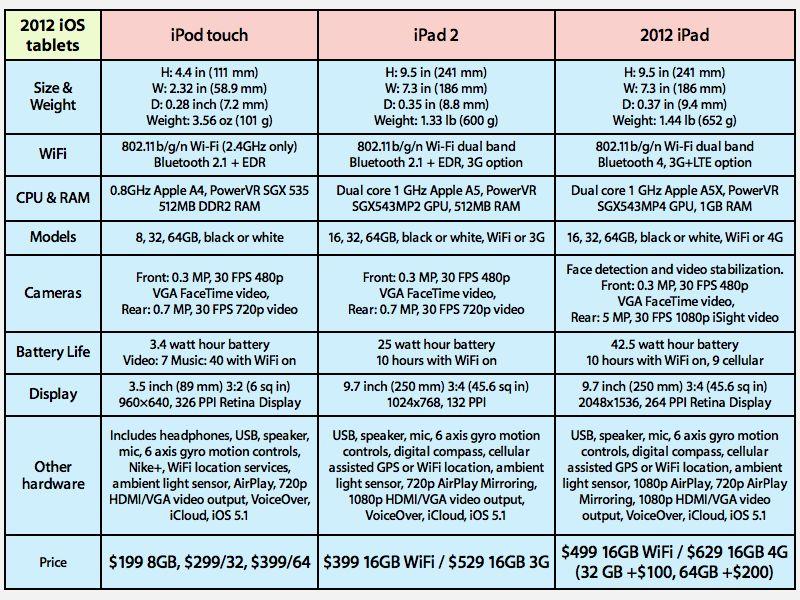
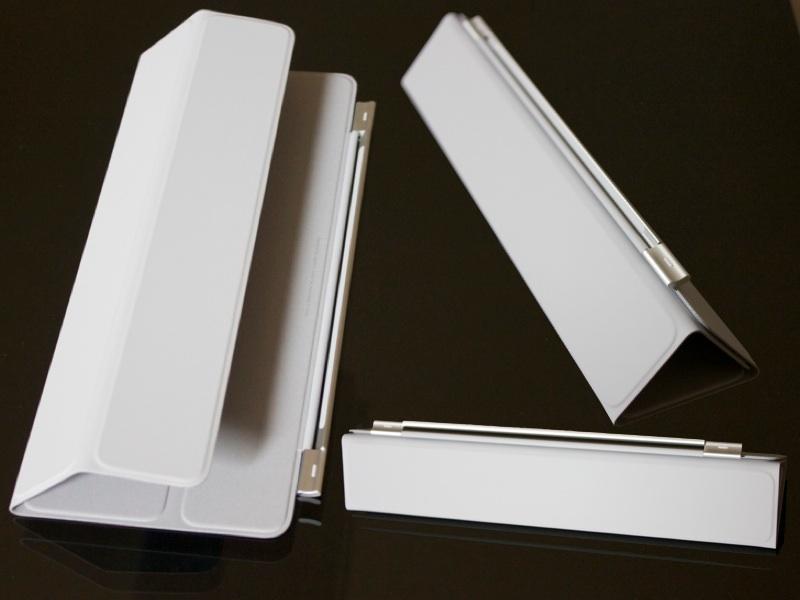
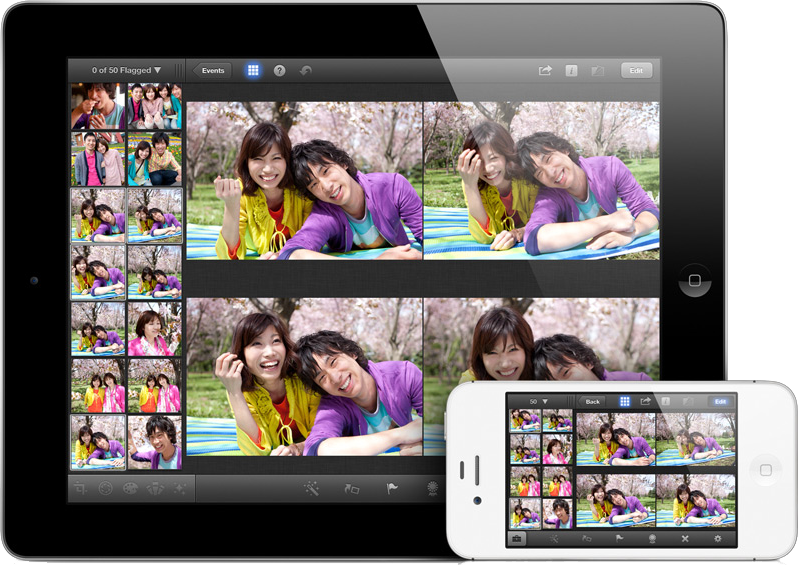
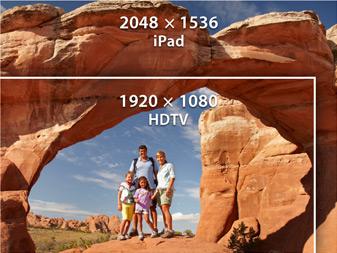

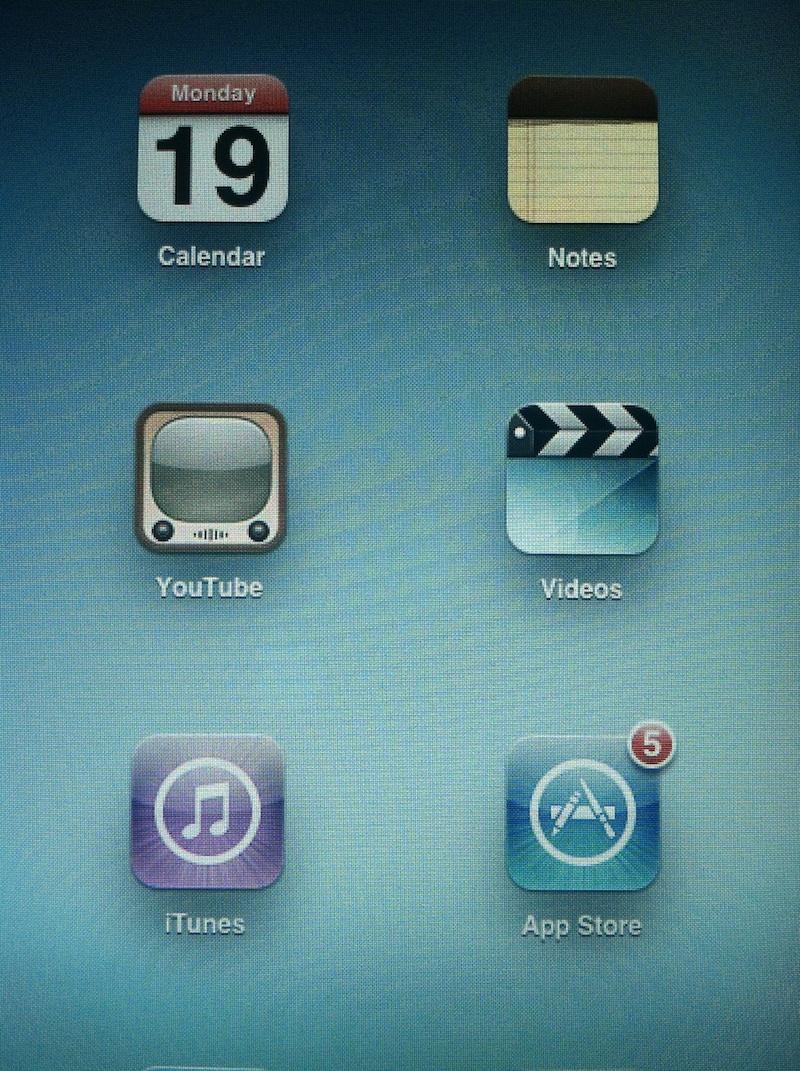
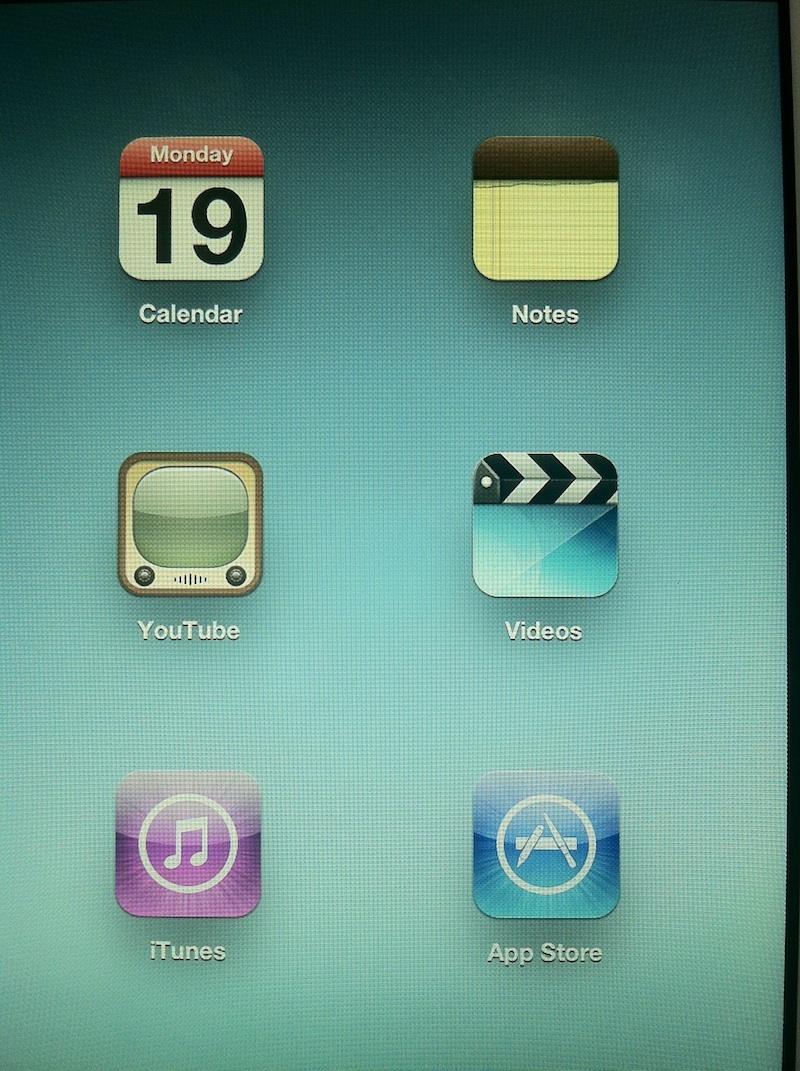







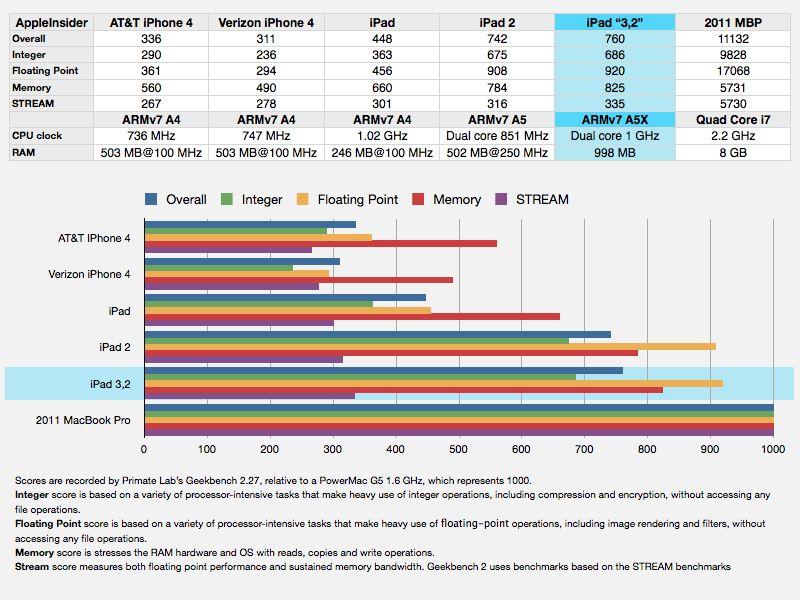

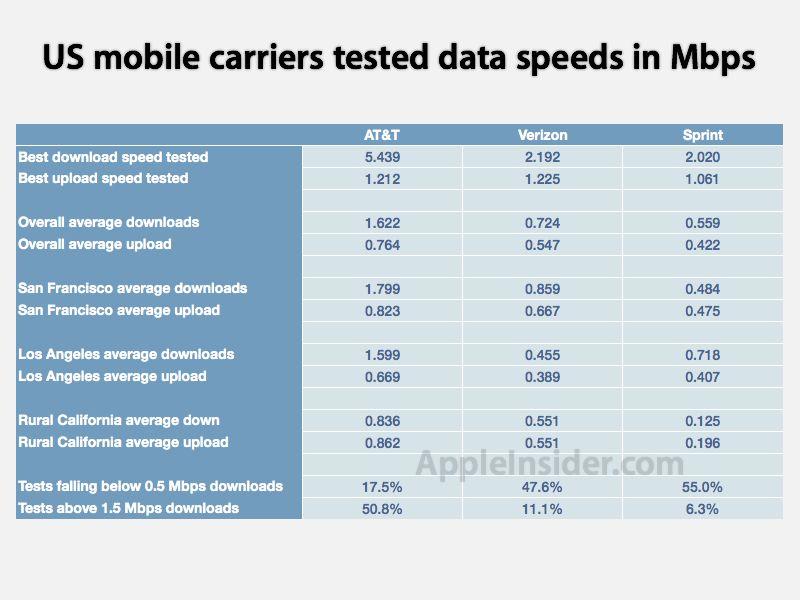
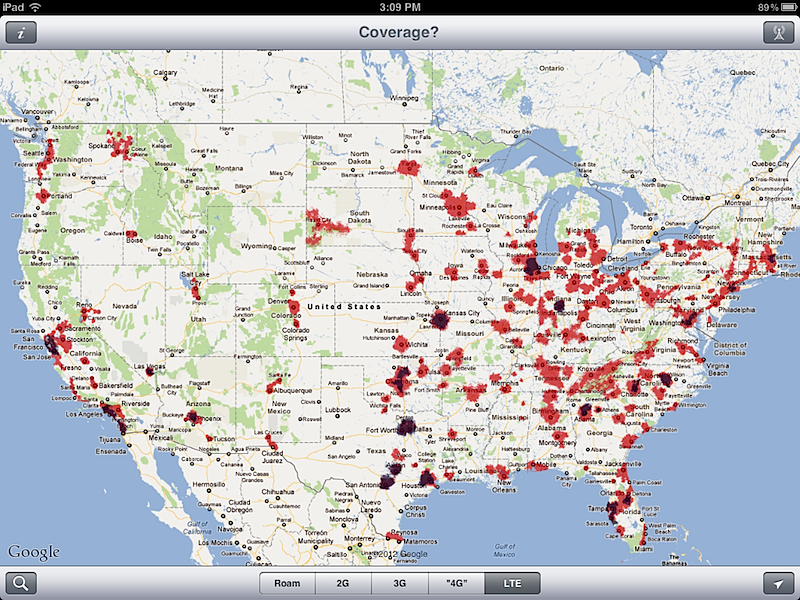
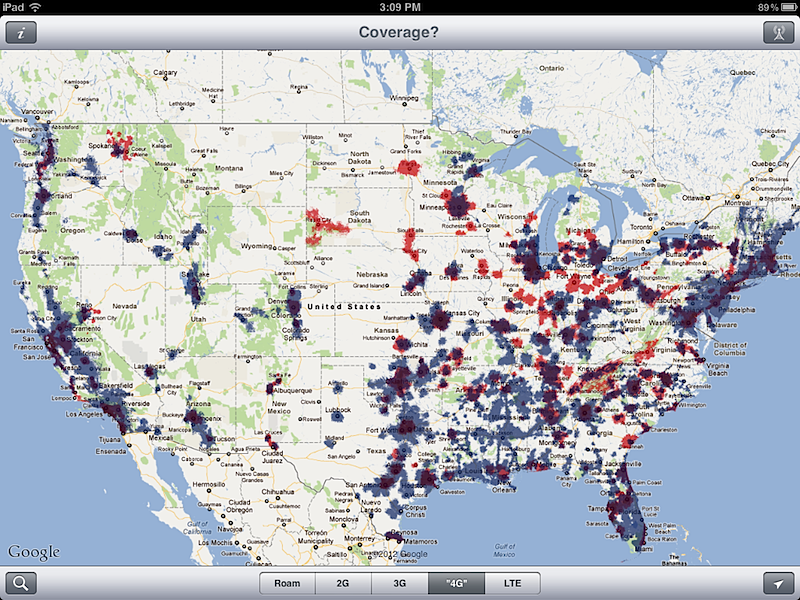
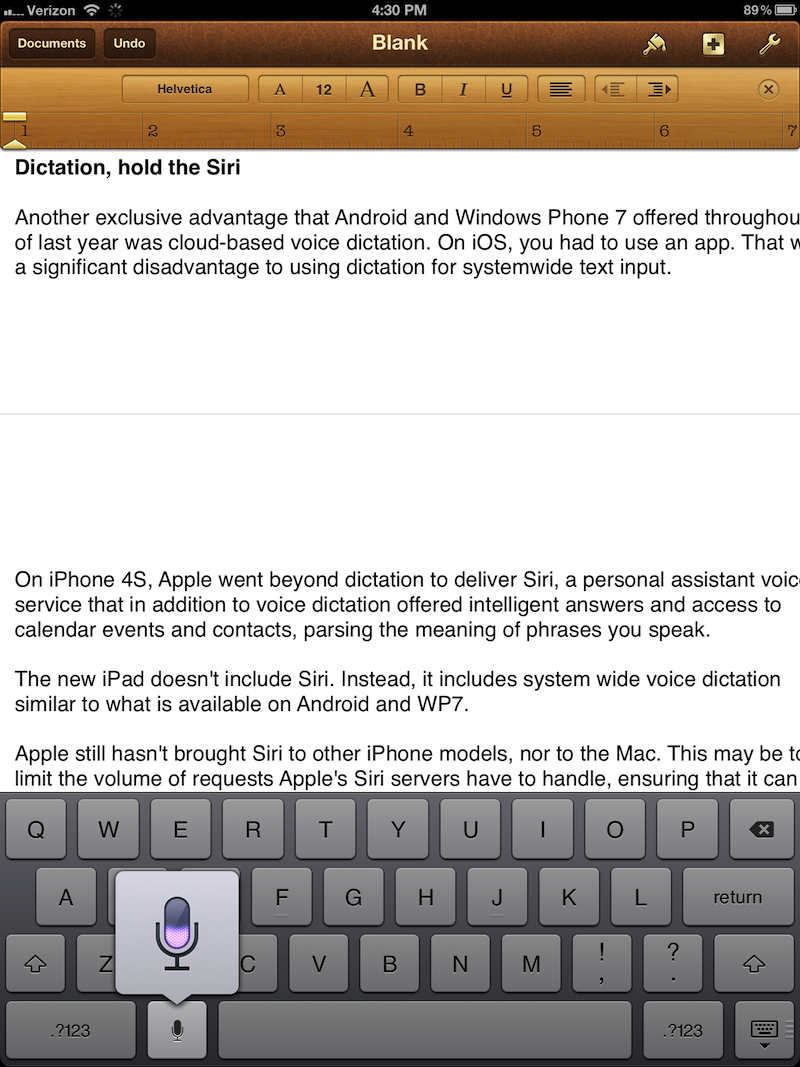
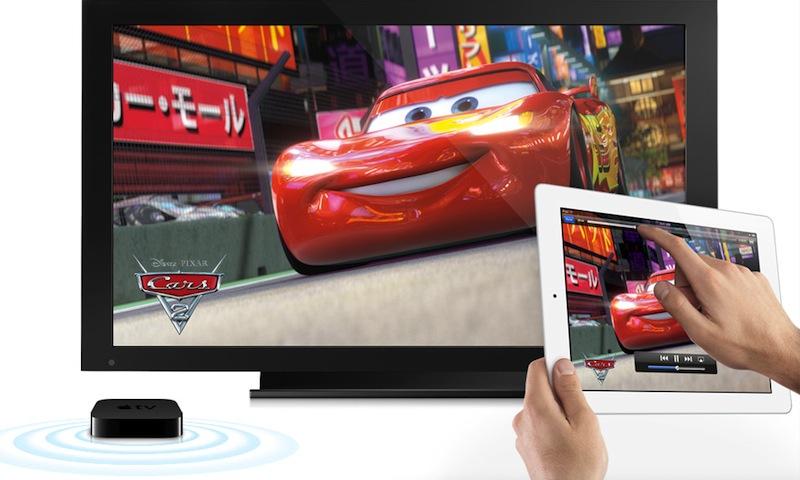
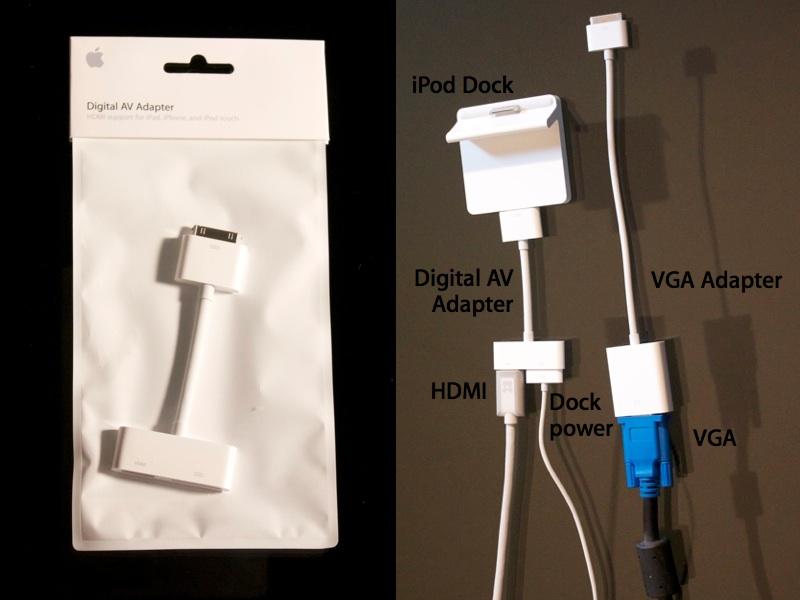
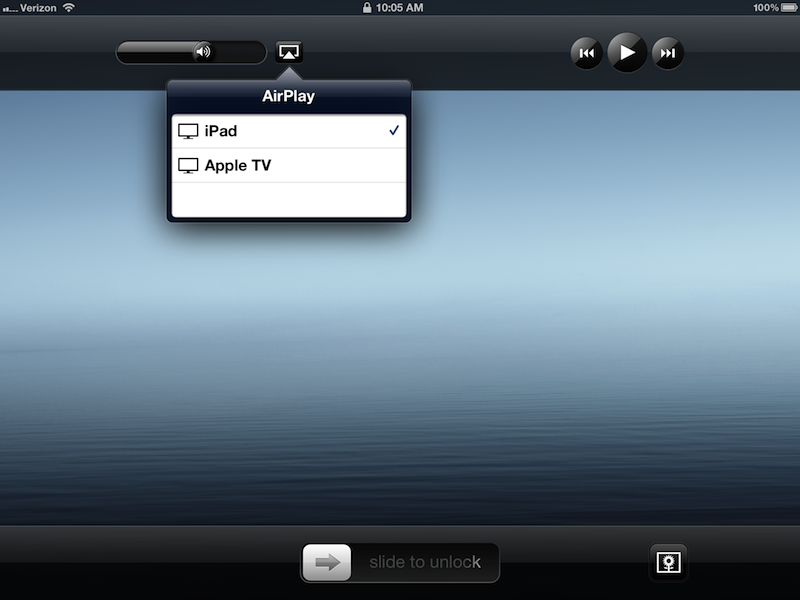
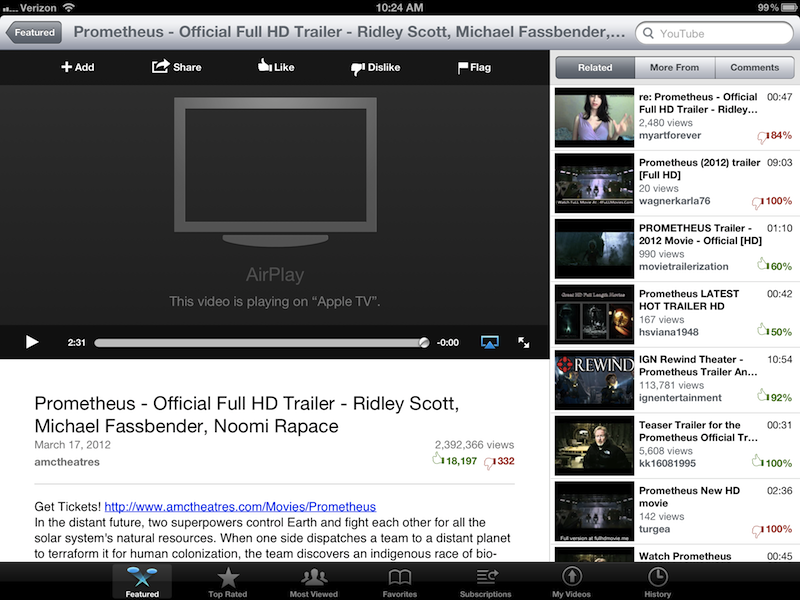
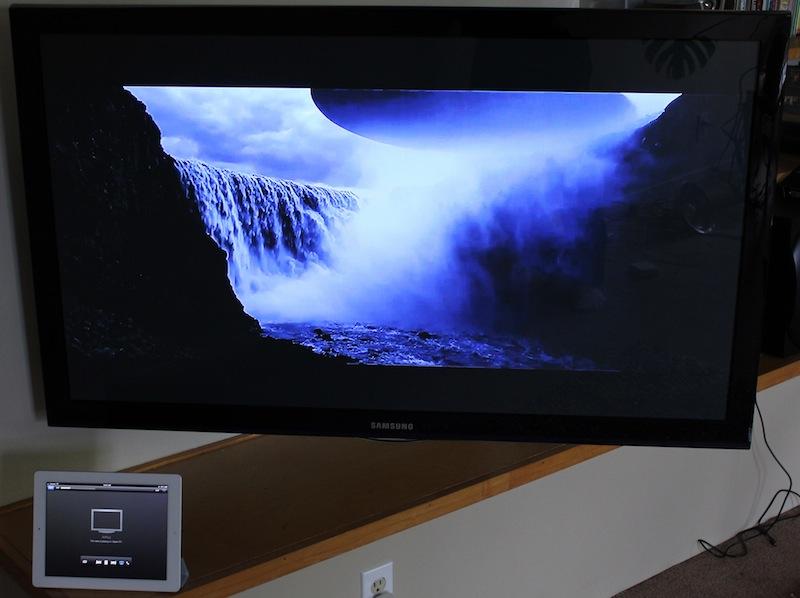
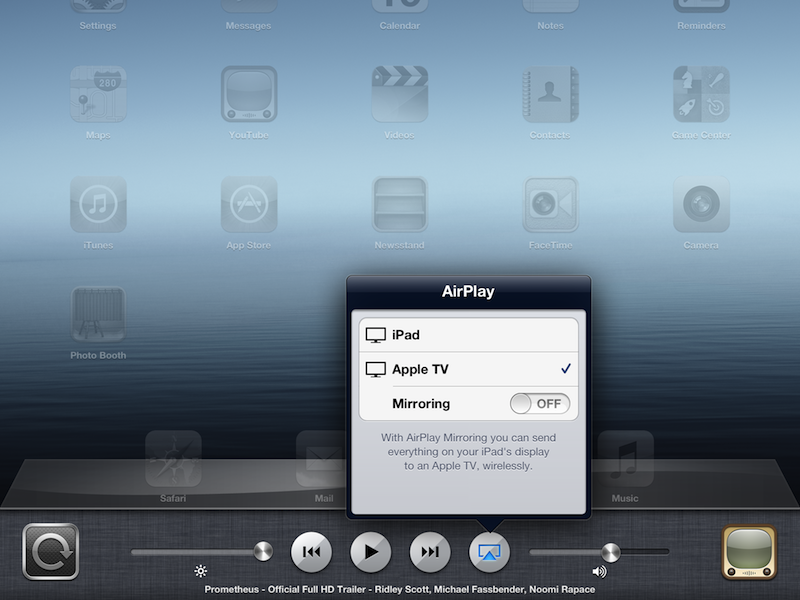
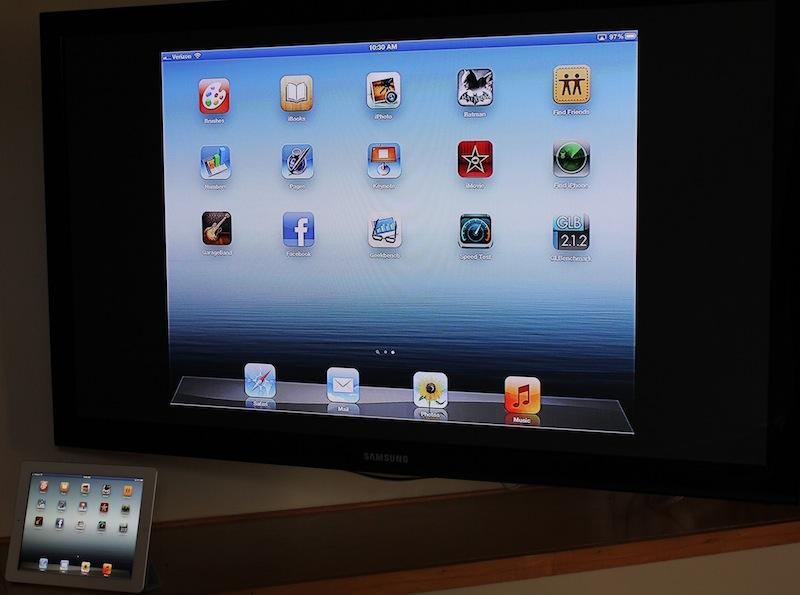
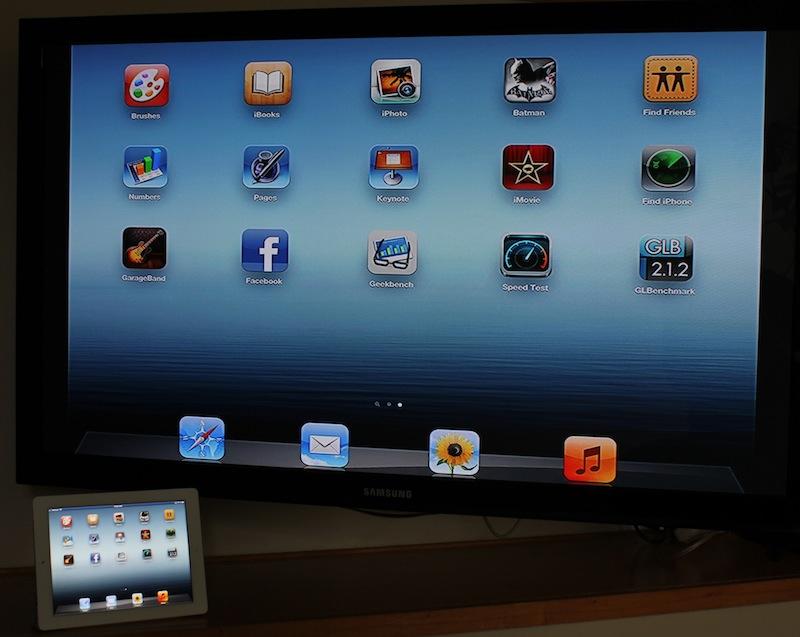
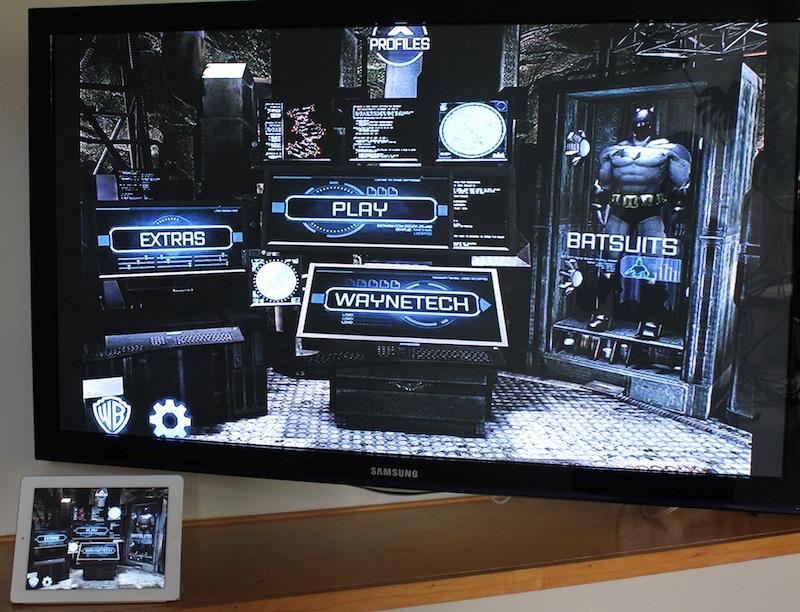
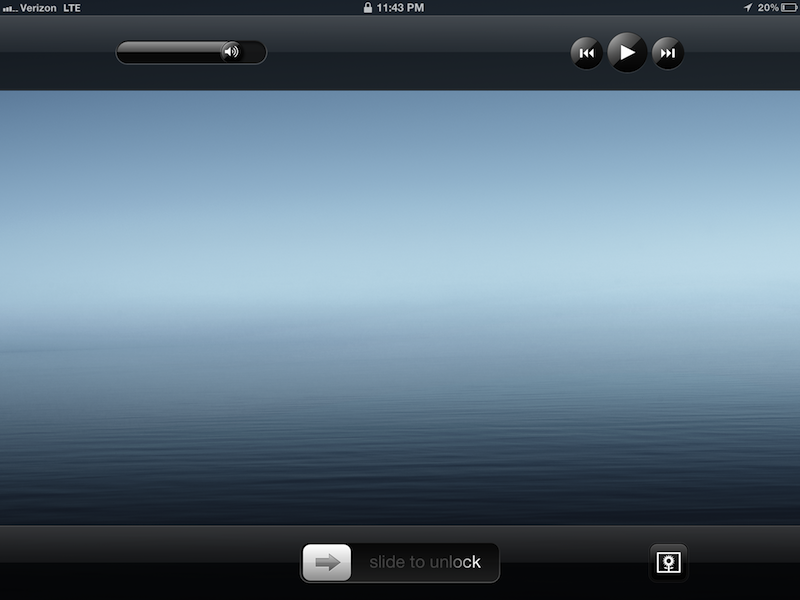

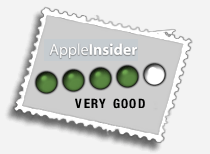
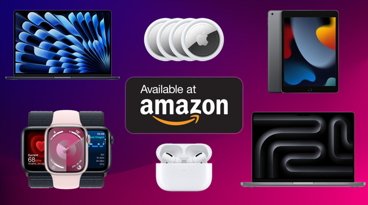
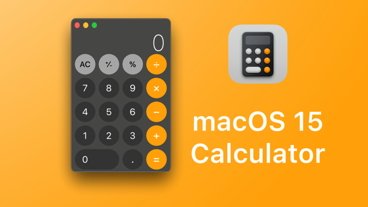
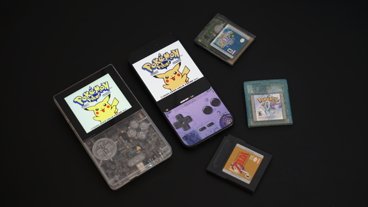
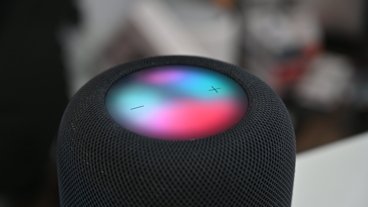
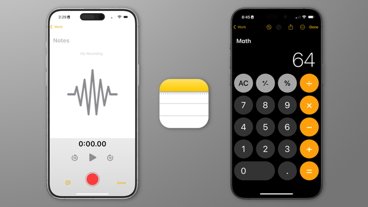
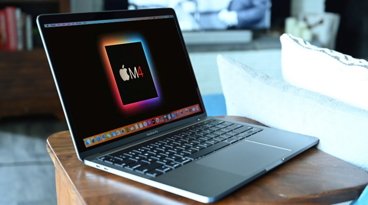
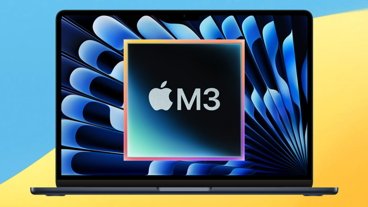
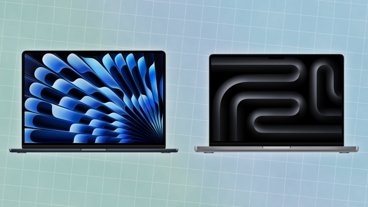
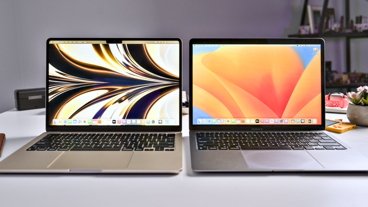
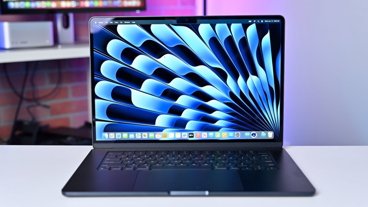
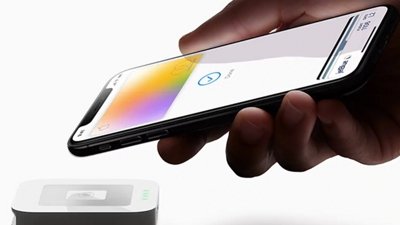
 Malcolm Owen
Malcolm Owen
 William Gallagher and Mike Wuerthele
William Gallagher and Mike Wuerthele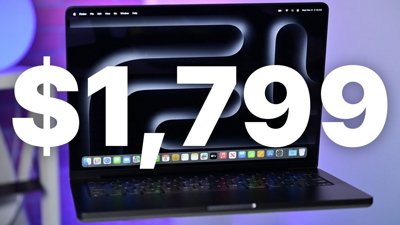
 Christine McKee
Christine McKee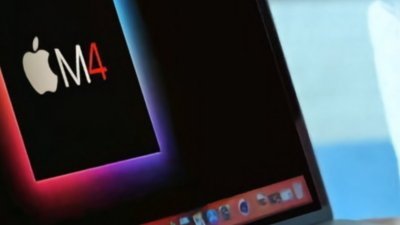
 William Gallagher
William Gallagher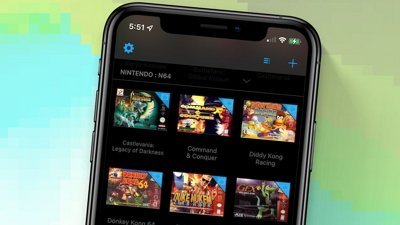
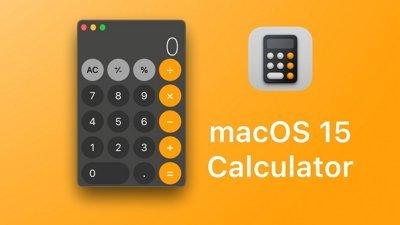
 Marko Zivkovic
Marko Zivkovic
